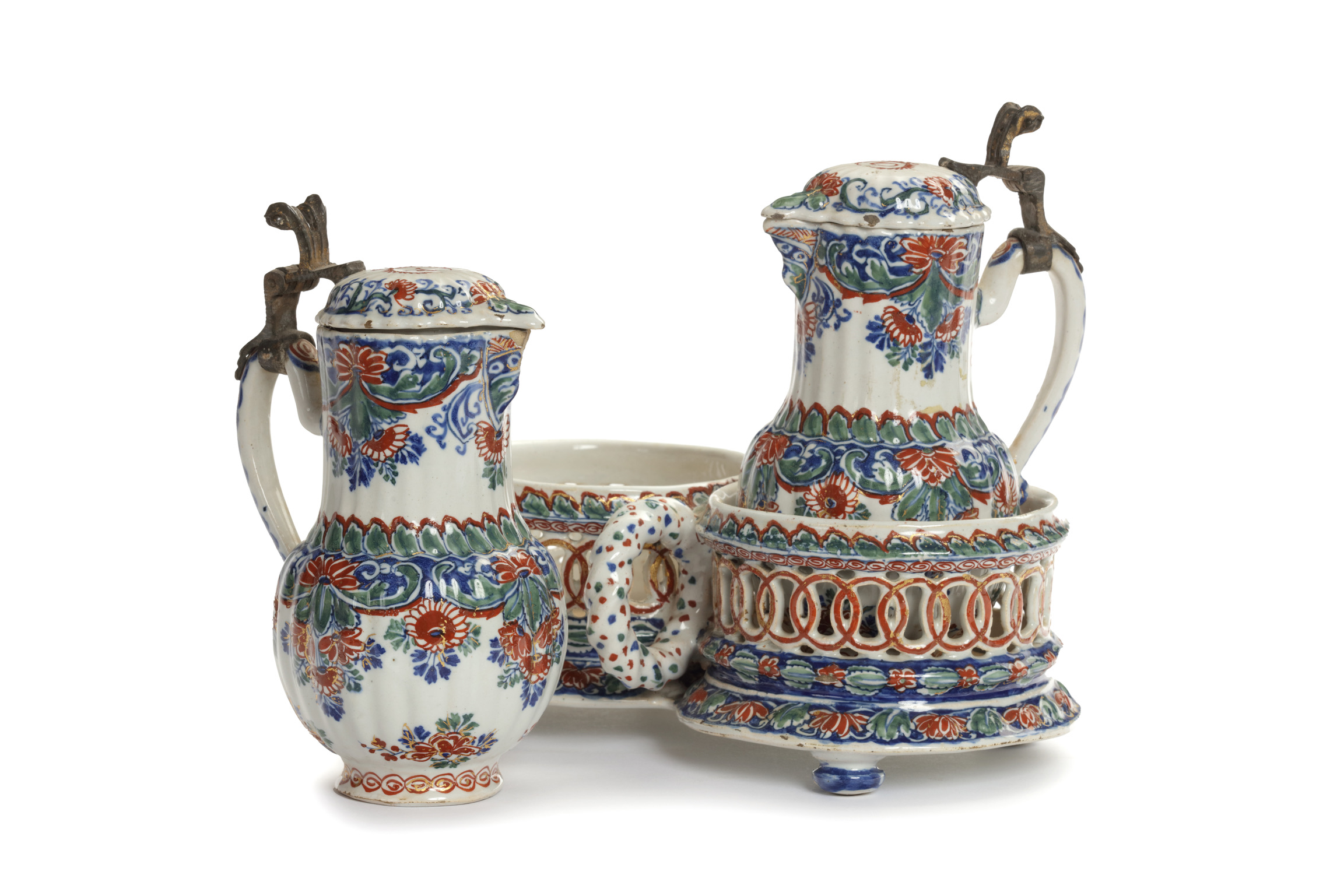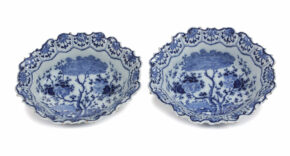![]()
Images on this website are licensed under a
Creative Commons Attribution-NoDerivs 3.0 Unported License.
OBJECT
D2319. Polychrome Reeded Cashmere Palette Cruet Set
Delft, circa 1710
Marked PAK in iron-red for Pieter Adriaensz. Kocx, the owner of De Grieksche A (The Greek A) factory from 1701 to 1703, or his widow Johanna van der Heul, the owner of the factory from 1703 to 1722
Comprising two ewers with pewter-mounted covers and stand, all painted in the cashmere
palette of blue, green and iron-red, the lower body with floral and foliate sprigs beneath a wide band of foliate lappets surmounted by a band of leafs on the body, repeated on the upper rim of the neck, the covers with either the letter “A” or “O” in iron-red encircled by a floral scroll border, the stand with an openwork of iron-red entwined rings below a band of leaves and above two bands of leaves and flowers, a spotted handle and raised on peg feet.
DIMENSIONS
Overall height: 18.2 cm. (7.2 in.)
PROVENANCE
Frederik Muller & Cie, Amsterdam. 28 and 29th of April 1908, lot 37;
Christie’s, Laren, 18th of October 1976, lot 226 (according to family archive);
Dutch Private Collection, Amsterdam and hence by family descent.
PROVENANCE+
The complete provenance of this entry has been registered by notarial deed with independent and secure registration agency Provenance+ Amsterdam.
NOTE
A cruet is any small container with a flat-bottom, narrow neck, spout, handle, and stopper. It is used to hold liquid condiments, such as olive oil and vinegar, hence the letters O and A for the Dutch words olie and azijn, oil and vinegar. The name is believed to have derived from the Old French word crue, which means earthen pot. Others say it is from the Dutch word kruicke, which was often spelled crewet. Cruet sets like the present, consisting of an olive oil and vinegar container, could be used at meal times. They were probably a late seventeenth-century invention, when fine dining became an exceedingly important social ritual and the dinner table underwent considerable changes. The typical shape of the cruet set appeared around the end of the seventeenth century, and it lasted well into the eighteenth century. As with many Delftware objects for the dinner table, the shape of this cruet set was probably inspired by a silver model.
Oil and vinegar may have been used for health reasons. People were somewhat suspicious of vegetables, since ancient health doctrine advised against the consumption of fruit and vegetables. The addition of oil and vinegar to vegetables was possibly believed to strip the food of its lesser properties. Another theory about the increased use of oil and vinegar is that the Dutch elite wanted more mild flavors in their food, and the condiments were less potent than other spices and could be used according to one’s own taste, while the original flavors of the ingredients remained more intact.
SIMILAR EXAMPLES
Other reeded cashmere cruet sets with openworked stand are currently unknown.









